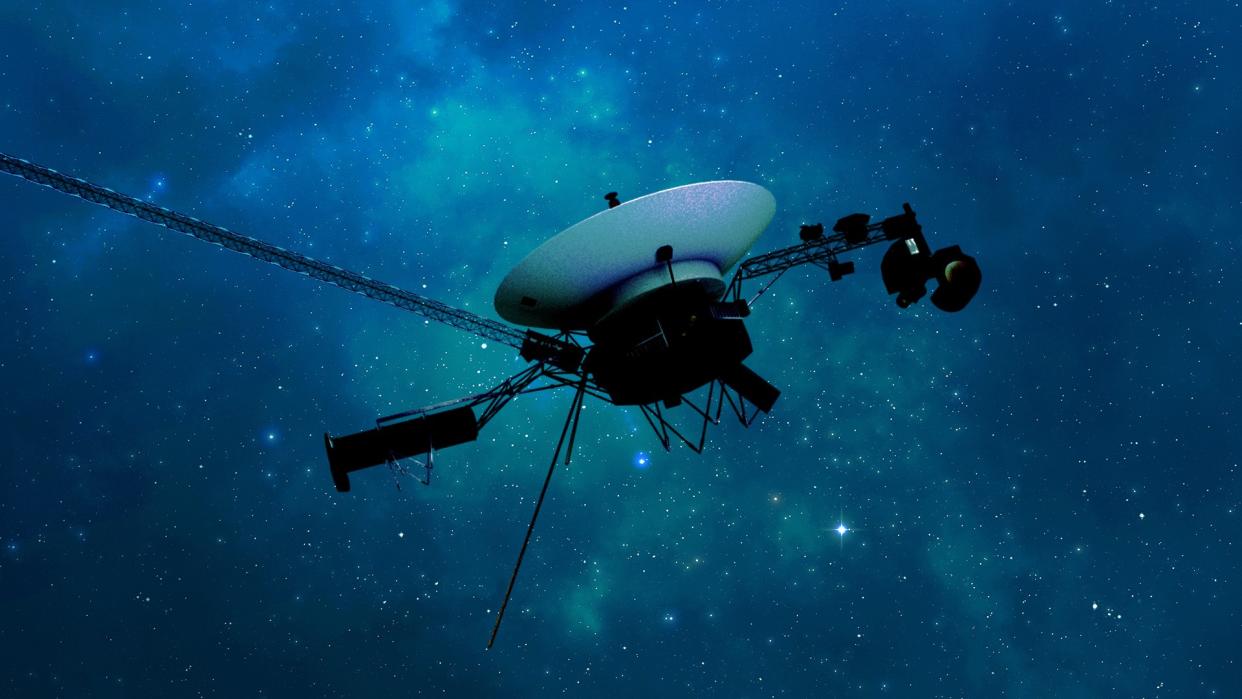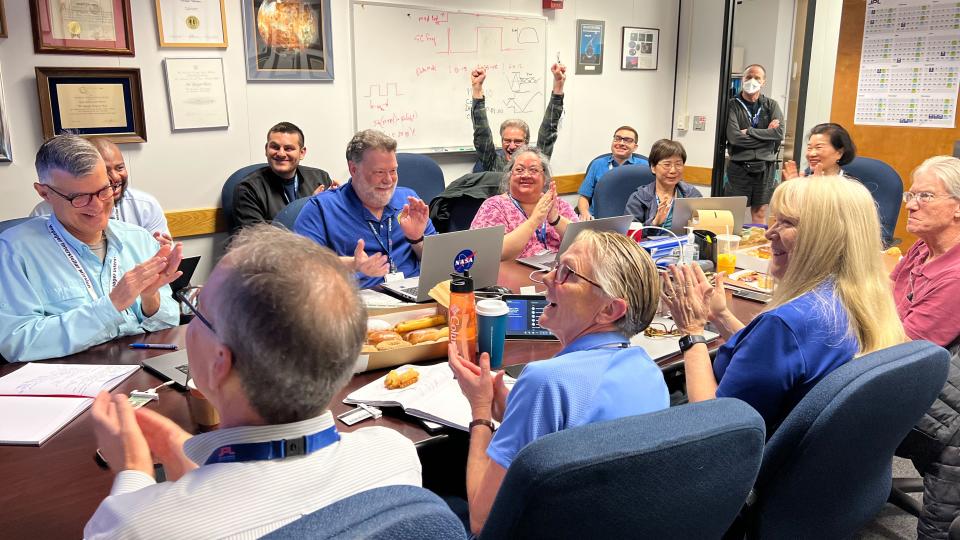After months of sending gibberish to NASA, Voyager 1 is finally making sense again

NASA's Voyager 1 probe is once again sending readable radio signals back to Earth after engineers fixed a computer glitch that caused the spacecraft to malfunction in November.
For the first time in five months, Voyager 1 is now transmitting usable data about the health and status of its onboard engineering systems back to our planet, NASA's Jet Propulsion Laboratory announced Monday (April 22). However, engineers have yet to fix the software that enables the spacecraft to return science data.
Voyager 1 is cruising through interstellar space roughly 15 billion miles (24 billion kilometers) away from Earth, which means mission control teams have to wait 22.5 hours for their commands to reach the spacecraft and another 22.5 hours for a response. Voyager 1 and its twin probe — Voyager 2, which continues to operate normally after a 2-week blackout last year — were launched almost 47 years ago and are the most distant human-made objects in existence.
Engineers first noticed something wrong with Voyager 1 on Nov. 14, 2023, when the probe suddenly began transmitting a nonsensical stream of ones and zeros instead of its usual neatly packaged science and engineering datasets.
Mission controllers could tell the spacecraft was still receiving their commands, however, indicating that its vital systems were operating normally.
Related: A mysterious 'hum' vibrates interstellar space. Voyager 1 has a recording of it.
In early March, after three months of unsuccessful tinkering, NASA engineering teams determined the issue was tied to one of Voyager 1's three onboard computer systems known as the "flight data subsystem" (FDS). The FDS is essential for packaging data harvested by the probe before they are sent to Earth, according to NASA's announcement.
Engineers located the glitch by sending a command — or "poke" — that prompted the FDS to try new sequences of code in its software in case the issue could be resolved by skirting a corrupted section. The command triggered a signal that differed from the stream of gibberish the spacecraft had been sending back, and that engineers were able to decode.

It turned out a single chip responsible for storing a portion of the FDS memory, including some of its computer software code, had stopped working. The loss of that code meant the probe's science and engineering data were unusable, according to NASA. To get around the issue, engineers broke up the code once stored in the chip and squeezed sections of it into functioning portions of the FDS memory.
RELATED STORIES
—Historic space photo of the week: Voyager 2 spies a storm on Saturn 42 years ago
—Neptune isn't as blue as you think, and these new images of the planet prove it
—Uranus and Neptune aren't made of what we thought, new study hints
The team then rewrote some of the reshuffled code so it could work as a whole again.
Engineers saved these modifications to the FDS memory on April 18. Two days later, they received a response from Voyager 1 showing that the reshuffle worked. For the first time in five months, the probe's message contained readable data, prompting celebrations at the Jet Propulsion Laboratory in Southern California.
However, solving the spacecraft's science data transmission will take further mending of the corrupted portions of the FDS software, NASA said in its announcement.
